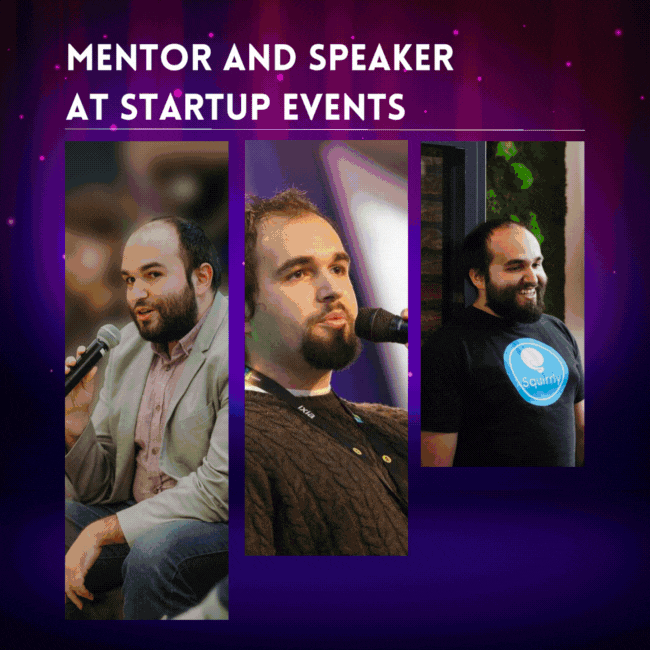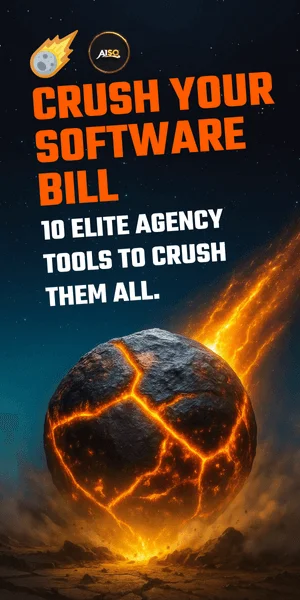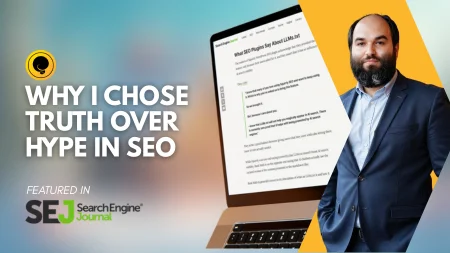The things you don’t know will be the things that stop you.
We’ve entered the world of Dark Social, which is such a fancy name. It also sounds so SciFi. Still, it’s not something you as a marketer can ignore.
In a perfect world, we’d just go ahead right now and post to the communities that we’ve researched back in Lesson 6.

We’d post there, people would love to click to read the articles we wrote. And we’d get new unique visitors to the website. We’d also get to see in Google Analytics exactly what groups they came from.
In a perfect world, we’d see a lot of engagement on the posts we write inside the groups and communities we’ve researched. People would just “like” and comment. They’d spend all their day trying to find out more about what we have to say on that subject we wrote about.
Without this lesson, all that I showed you until now would lead you to depression, and I’d instantly become the Ultimate Villain in Content Marketing.
Still better than being mister nobody, huh?
Oh, well. Count on me to be the hero:
At first glance, when you’ll start posting to these social media groups and communities, you will get the feeling that you are alone in them. Not in all of them, but in most of them.
The Grim Feeling That Nobody Wants You There And How to Deal With It.
You will feel like you spend countless hours posting and “like”-ing all the posts inside those communities and no one reacts.
This is emotion.
I know how it feels to go around posting things and then not being able to do anything else. Because you just keep going back to those posts and trying to see if anyone replied. Or if they clicked “like”. Or, I dunno: did SOMETHING!
This is also very emotional.
You do not need this. You need to be very rational about all this, and only make decisions after you give everything enough time and after you read your data from Analytics.
Remember Lesson 5?
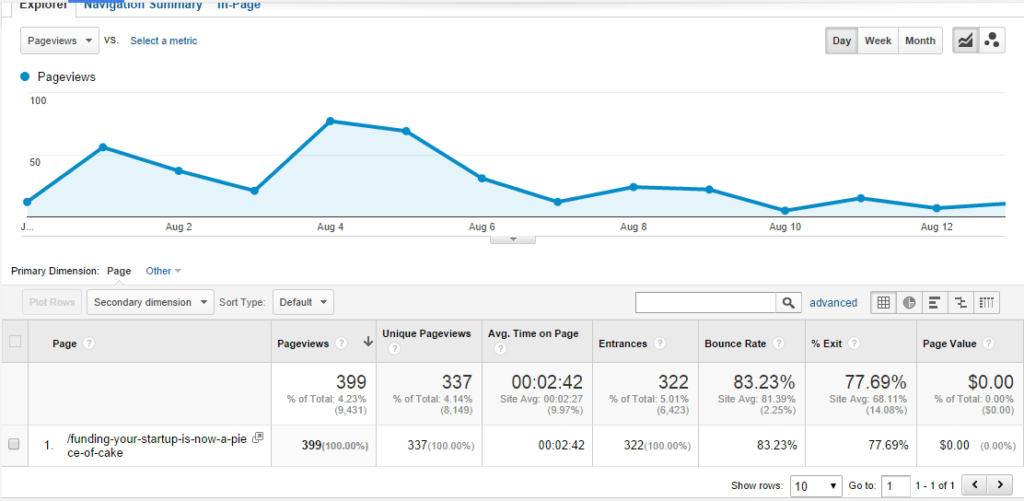
You need to go back to it and see how you can view the traffic for just one blog article.
Even though you will feel like you post to hundreds of groups and nothing happens, do not trust your feelings.
Trust Analytics.
Wait for 3 days after you last posted about one of your articles. Go to analytics. See the traffic for that article.
Now, you’ll finally know if it worked or not.
And most probably it did, even though you felt like you were left alone in the dark.
On LinkedIn, this kind of thing will occur almost 99% of the time. Not kidding.
We almost gave up (when we first developed this method) on LinkedIn groups, because we felt nothing was happening.
And guess what?
It was our main source of traffic!! It was bigger than Twitter, where we actually got a lot of engagement. On those social networks we had engagement, but no traffic.
LinkedIn was the best thing for us. And we almost gave up on it, because we were too emotional.
But the Dark Social (those things you can’t get a clear view of when “doing” social media) does not end here.
The Dark Social is bigger and it’s present at other levels as well.
Another thing that you will want to do soon after this:
Quitting Communities Because You Don’t Feel Right About Them
This is just wrong.
You will feel inclined to start doing this. Trust me. After a while, you will feel like you should just quit some of the communities because you think they don’t bring anything.
Or you’ll come up with different ideas of testing which communities work and which don’t.
Well, what can you do?
One thing is for sure: Google Analytics will not be able to help you here, because there is absolutely no way to see in Analytics which community delivers what amount of traffic. You can’t do it. It’s part of the whole Dark Social thing, I’m talking about, and this is all covered in darkness.
Sounds like Star Wars talk, doesn’t it?
Also, if you make your links with shortening services and tracking: it still won’t work!
And it will ruin your strategy. Why?
If people see you posting on social media groups with links like buff.ly or bit.ly, or whatever, they will think that you’re not a real person. They’ll consider that the whole thing was automated, so why waste their time and click, if it’s not something that a real member of the community posted there?
Quitting Groups and Communities That Don’t Work Well Enough For You – How to Do It the Rational Way
Okay, so the problem remains. Let’s say you have 200 Facebook groups.
And you want to quit some of them because there are just too many of them.
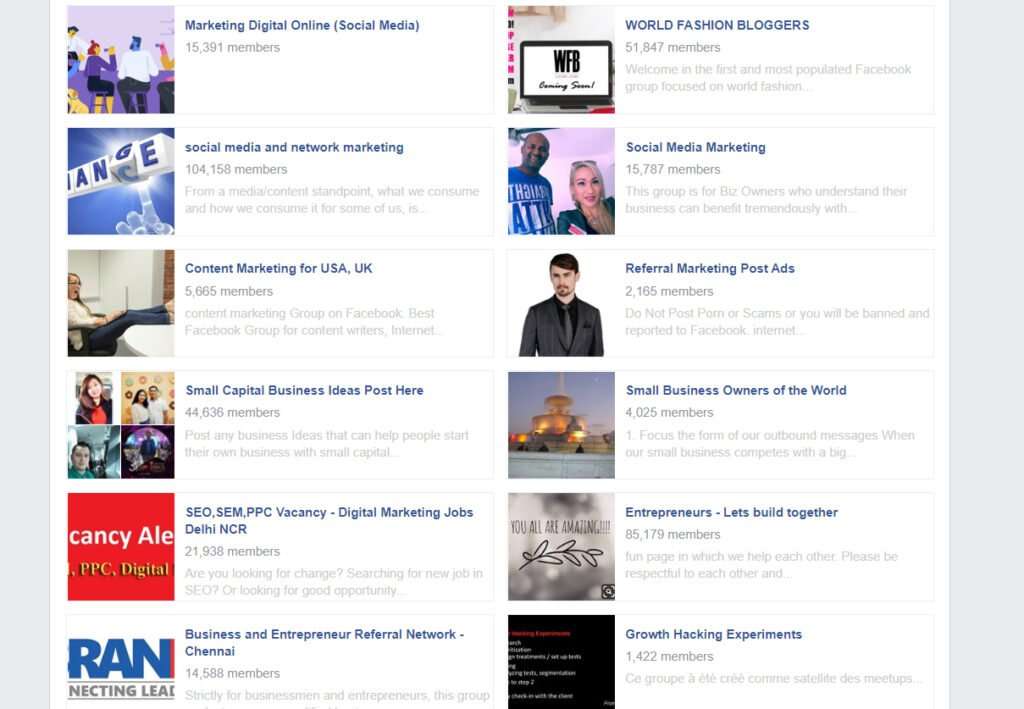
How do you do it?
✅Study the posting frequency. If there are no new posts in that group, it probably means that it is dead.
✅Post to all of them. Then look after 1 week (just an example) and see if your post is still the first one in the group. All our experiments showed that those groups are dead if that happens.
Other than this, you can just start cutting about 30 groups off every two weeks, and see if your traffic from that social media channel goes down.
If it goes down: it means some of those 30 groups bring traffic, and then you can narrow it down further.
If it doesn’t go down: it means that posting to those 30 groups is highly irrelevant for your blog marketing strategy, because they bring no real results for you.
That’s it. A divide and conquer strategy (divide et impera).
This lesson right here has already taught you a lot of valuable things, that would have demotivated you along the way. Don’t get demotivated! Keep posting. If you stop, you won’t be able to set the wheels of content in motion.
Here’s how you can get over another thing that may stop you from posting on social media groups and communities:
At a Growth Hackers Conference in London, we heard from Rand Fishkin of MOZ, that Google was hiding search engine traffic under direct traffic. This made me wonder: what if Google Analytics does the same thing for traffic coming to the blog articles from social media?
Especially from social media groups …
And we began investigating. What we found out was that actually, it is true. Analytics does hide a big percentage of social media traffic in the Direct Traffic section.
We had created a new blog just for test purposes. We placed new original content on it. And then we started promoting it ONLY on social media groups on LinkedIn.
The blog started getting traffic.?We looked at the sources. It said that most of it came from Direct Traffic and Referral Traffic. Wrong! It was all social media traffic, that was misplaced in their tool.
[we did filter out our own personal visits, so there was no interference]
Hopefully now, if you’ll start posting to social media groups, you won’t get yourself demotivated by the fact that it seems like very little traffic is coming from Facebook, for example. As I said, some of it is simply hidden from you.
There you have it, Dark Social again.
Of Groups and Moderators – How Do You Make Sure That People Will Come to Your Site by Posting to Groups
Okay, so by now you have most of the theory figured out, and you know what to look for. You also know that you need to keep posting, even though the Dark Social will try to mislead you and make you quit.
Especially since the moderators in these groups are the gatekeepers. If they feel like they left an annoying beggar in, they will get angry.
So what you need to do is make sure that the gatekeepers feel like they let a rockstar in.
Don’t post in a spammy way.
If you fail to do this, there are VERY high chances that you will be banned from the group, thus losing one of your traffic sources.
Don’t go to a group and post something like:
“this is my new post about social media [LINK]”
Let’s say you did this in a Social Media Networking Group.
What will the other members of the group feel?
1) That you are promoting something you wrote. You don’t care about them and what they need. You just promote your “new thing”.
2) That you do not care about them and that if more people like you come to that group and are not stopped by a moderator, they will just leave the group.
3) Moderators don’t want to see people leaving the group because of spammers. So they will instantly ban you.
4) You don’t say anything specific about the post you make. You just bait them into clicking that link, thus giving ZERO value to the group.
5) The Group is called Social Media Networking Group. Maybe the people in that group want to see something new about making new friends on Snapchat.
You’ve just spammed them with an unrelated post about Twitter marketing.
6) All of these will make them feel like you are the beggar.. begging for their clicks.

Becoming a rockstar.
This will not work 100% of the time, but certainly, it will work 90% of the time. (saying this because some mods just can’t be satisfied)
What do people in that group usually share?
This is what you need to find out.
Look at all the latest posts from the last 1 or 2 months.
What do they care about?
See which of the posts that have been placed there by other members, actually got likes, comments, etc.
This can become a good measure of what they’d like to read.
Remember: your purpose with groups and communities is to get targeted people to your site.
Get them with content they’ll genuinely like to read.
Do you have content that would be useful for them?
Think if you already have content on your blog that you can post to the groups you found.
No? Then go ahead and create new content that is 100% targeted to the groups you found.
Seriously. It’s the best thing to do. You see some groups for which you have no content. But you think those groups would bring you a lot of traffic:
– then just go ahead and create content for them! They will love it and they will react to it in a positive way. Moderators too!
Great!
I think we’re getting somewhere with this lesson.
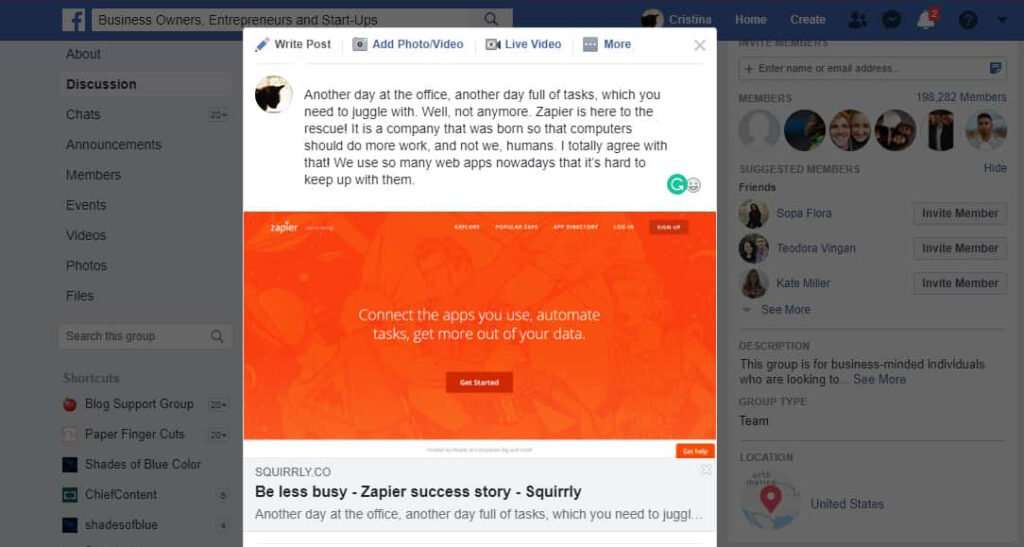
Next thing: Long Posts in communities.
Make them feel like you’re only posting the link as an afterthought.
Make them feel like they received most of the info just by reading your post. This will help them read your post, be happy you posted it and it will help them make a personal decision whether or not they want to click to read more.
Your posts in communities have to be over 250 characters.
They should be about 100 words long. You can even take them to 180 words if you see that longer posts usually work in those groups.
You are now ready to start posting.
Here’s one more secret about moderators, that will save your life and make these gatekeepers happy.
One moderator will most probably be a moderator in at least one other group as well.
Why is this a great insight for you?
If you don’t know this, the first thing you’ll want to do is: create ONE message following the guidelines I mentioned above and then copy+paste it to all the groups in your list.
I’ve seen this done before. It is bad. Moderators (because they moderate more than one group) will figure out what you’re doing and they will delete your posts or ban you.
Make sure you have a new message for each group.
Make sure that in ONE single day you do NOT go ahead and post just ONE article to many groups (even if the message changes, you may still get banned for doing that).
In Lesson 8, I will give you some great templates that will help you figure all this out. You’ll see that by using our way, it’s pretty simple to be a rockstar and keep moderators happy.
That being said, thanks for being in class today, and see you soon.
